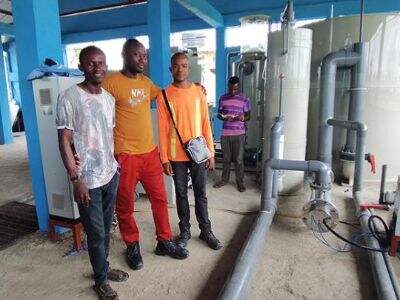စွမ်းအင်သည် အလွန်အရေးကြီးပါသည်။ ၎င်းသည် နေ့စဉ် ဘီလီယံချီ အရာများကို ကူညီပေးပါသည်။ အစာချက်ရန်၊ ရုပ်မြင်သံကြားကြည့်ရန်နှင့် ဗီဒီယိုဂိမ်းများ ကစားရန် စွမ်းအင်လိုအပ်ပါသည်။ ကြီးမားသော ငါးမွေးမြူရေးစခန်းများသည် ကြီးမားပြီး ကျန်းမာသော ငါးများထုတ်လုပ်ရန် စွမ်းအင်ပမာဏများစွာ လိုအပ်ကြောင်း သင်သိပါသလား။ ယနေ့ ဆောင်းပါးတွင် ငါးမွေးမြူရေးစခန်းများ (သို့) RAS စက်ရုံများ၏ စွမ်းအင်စားသုံးမှုနှင့် သဘာဝပတ်ဝန်းကျင်အပေါ်တွင် ဖြစ်နိုင်သော သက်ရောက်မှုများကို ဆွေးနွေးပြောဆိုပါမည်။
RAS စက်ရုံများဆိုသည်မှာ အဘယ်နည်း။
RAS စက်ရုံများသည် ပင်လယ်ကွဲသကဲ့သို့ ငါးမွေးမြူသော တန်ချိန်များဖြစ်ပါသည်။ ထိုနေရာများတွင် ငါးများ ကျန်းမာစွာ မွေးမြူနိုင်ရန် ရေအခြေအနေများကို ထိန်းသိမ်းရန် စွမ်းအင်ပမာဏများစွာ အသုံးပြုပါသည်။ RAS အဆောက်အအုံများတွင် စွမ်းအင်အများစုကို ကုန်လျော့ဖို့မီးသတ်ခြင်းမှ ရရှိပါသည်။ ဥပမာ- ကုန်လျော့ဖို့မီးသည် ကုန်လျော့ဖို့မီးသို့မဟုတ် ဆီကို မီးရှို့ခြင်းဖြစ်ပါသည်။ ညစ်ညမ်းသော အရာများသည် သဘာဝပတ်ဝန်းကျင်ကို ထိခိုက်စေနိုင်သော ပတ်ဝန်းကျင်ကို ဖော်ထုတ်ပေးနိုင်ပါသည်။
စားသုံးမှု၏စျေးနှုန်း
RAS စနစ်များတွင် စွမ်းအင်အသုံးပြုမှုများပါက စရိတ်များပြားလေ့ရှိပါသည်။ စွမ်းအင်နှင့် အီလက်ထရစ်ဓာတ်အများအပြားကို အသုံးပြုရခြင်းကြောင့် ကျွန်တော်တို့အနေဖြင့် ငါးဝယ်ယူရာတွင် စရိတ်များလာပါသည်။ အင်အားကြီးများသော RAS စနစ်များနှင့် ယှဉ်ပြိုင်ရာတွင် ငါးမွေးမြူရေးစက်များအတွက် ခက်ခဲမှုဖြစ်စေပါသည်။
စွမ်းအင်အရင်းအမြစ်များအကြောင်း ကောင်းသောသတင်း
သို့သော်လည်း ကောင်းသောသတင်းရှိပါသည်။ RAS စနစ်အချို့သည် လေနှင့် နေစွမ်းအင်ကဲ့သို့သော တိုးတက်သော စွမ်းအင်အရင်းအမြစ်များကို အသုံးပြုရန် စတင်နေပါပြီ။ ထိုစွမ်းအင်များမှ ရရှိသောစွမ်းအင်များသည် ညစ်ညမ်းမှုမရှိသောကြောင့် သဘာဝပတ်ဝန်းကျင်အတွက် ကောင်းမွန်ပါသည်။ ထို့ပြင် ထပ်ဆောင်း၍ ထပ်မံရရှိနိုင်သောကြောင့် အဆုံးမရှိပေ။ ထိုကဲ့သို့သော စွမ်းအင်အရင်းအမြစ်များကို အသုံးပြုခြင်းသည် သဘာဝပတ်ဝန်းကျင်အကျိုးပြုရုံသာမက ငွေကိုလည်း ခြွေတာပေးပါသည်။
စွမ်းအင်အသုံးပြုမှုအကြောင်း တိုက်ရိုက်ပြောဆိုခြင်း
RAS စက်ရုံများသည် ၎င်းတို့၏စွမ်းအင်စားသုံးမှုအကြောင်း ရိုးသားဖော်ပြရပါမည်။ ထို့နှင့်အတူ ပတ်ဝန်းကျင်ဆိုင်ရာစိုးရိမ်မှုနှင့် စွမ်းအင်ချွေတာရေးဆိုင်ရာ နည်းလမ်းများကို RAS စက်ရုံများက ပြသပါသည်။ ဒါဟာ ငါတို့ဝယ်သူတွေကို ငါတို့ငါးတွေကို ဘယ်မှာဝယ်ရမလဲဆိုတာကို ဆုံးဖြတ်ရာမှာ ကူညီပေးပါတယ်။ EWater မှာတော့ RAS စက်ရုံများတွင် အီလက်ထရစ်ဓာတ်အားကို အသုံးပြုမှုအကြောင်းကို ရိုးသားစွာဖော်ပြပါသည်။
နည်းပညာအသစ်က RAS စက်ရုံများအား စွမ်းအင်ကိုချွေတာရာတွင်ကူညီပေးပါသည်။ ဥပမာအားဖြင့် စွမ်းအင်စားသုံးမှုပမာဏကိုစောင့်ကြည့်ရန်နှင့် စားသုံးမှုကိုလျော့နည်းစေရန် အချို့စက်ရုံများတွင် ဆင်ဆာများကိုအသုံးပြုကြပါသည်။ အချို့စက်ရုံများတွင် စွမ်းအင်ချွေတာသည့်ကိရိယာများဖြစ်သော LED မီးများနှင့် စွမ်းဆောင်ရည်မြင့်ပန့်များကိုအသုံးပြုကြပါသည်။ RAS စက်ရုံများသည် နည်းပညာအသစ်များကို နောက်ဆုံးပေါ်စနစ်များတွင်အသုံးပြုလျက်ရှိပြီး စွမ်းအင်စားသုံးမှုနှင့် ပတ်ဝန်းကျင်သို့သက်ရောက်မှုကိုလျော့နည်းစေရန် ဖြစ်နိုင်ခြေရှိပါသည်။
အဆုံးသတ်
စုစုပေါင်း သဘာဝပိုင်းလေ့လာရေးတွင် အသုံးပြုသည့် ပစ္စည်းများနှင့် ဆောင်ရွက်များ စွမ်းအင်သည် အရေးပါသော အရင်းအမြစ်တစ်ခုအဖြစ် တည်ရှိနေသောကြောင့် ကျွန်ုပ်တို့ ၎င်းကို ပါးနပ်စွာ အသုံးပြုရမည်ဖြစ်သည်။ ၎င်းတို့သည် လတ်လတ်ဆတ်ဆတ် ရိတ်သိမ်းပြီး ကျန်းမာသောငါးများရရှိရေးတွင် ကြီးမားသောခြေလှမ်းတစ်ခုဖြစ်သော်လည်း ၎င်းတို့၏ စွမ်းအင်အသုံးပြုမှုအား ၎င်းတို့၏ လယ်ယာများ၏ အကျိုးကျေးဇူးအားလုံးကို ပျက်ပြားစေခြင်းမရှိစေရန် ၎င်းတို့၏လည်ပတ်မှုကို သန့်ရှင်းစွာ စွမ်းအင်ထုတ်ရန် လိုအပ်ပါသည်။ ပိုမိုကောင်းမွန်သော စွမ်းအင်ရင်းမြစ်များ၊ ပွင့်လင်းမြင်သာမှုနှင့် နည်းပညာအသစ်များအားလုံးသည် RAS အဆောက်အအုံများသည် သဘာဝပတ်ဝန်းကျင်ကို ကာကွယ်ရန် ကူညီပေးပါလိမ့်မည်။ လုပ်ဆောင်ချက်တိုင်းကို ထည့်တွက်သည် — ဤနေရာတွင် ကျွန်ုပ်တို့၏ကမ္ဘာမြေကို လျှော့ချရန်နှင့် ဂရုစိုက်ရန်ဖြစ်သည်။

 EN
EN
 AR
AR
 BG
BG
 HR
HR
 CS
CS
 DA
DA
 NL
NL
 FI
FI
 FR
FR
 DE
DE
 EL
EL
 HI
HI
 IT
IT
 JA
JA
 KO
KO
 NO
NO
 PL
PL
 PT
PT
 RO
RO
 RU
RU
 ES
ES
 SV
SV
 TL
TL
 IW
IW
 ID
ID
 SR
SR
 UK
UK
 VI
VI
 HU
HU
 TH
TH
 TR
TR
 AF
AF
 BN
BN
 LO
LO
 LA
LA
 MY
MY
 UZ
UZ

